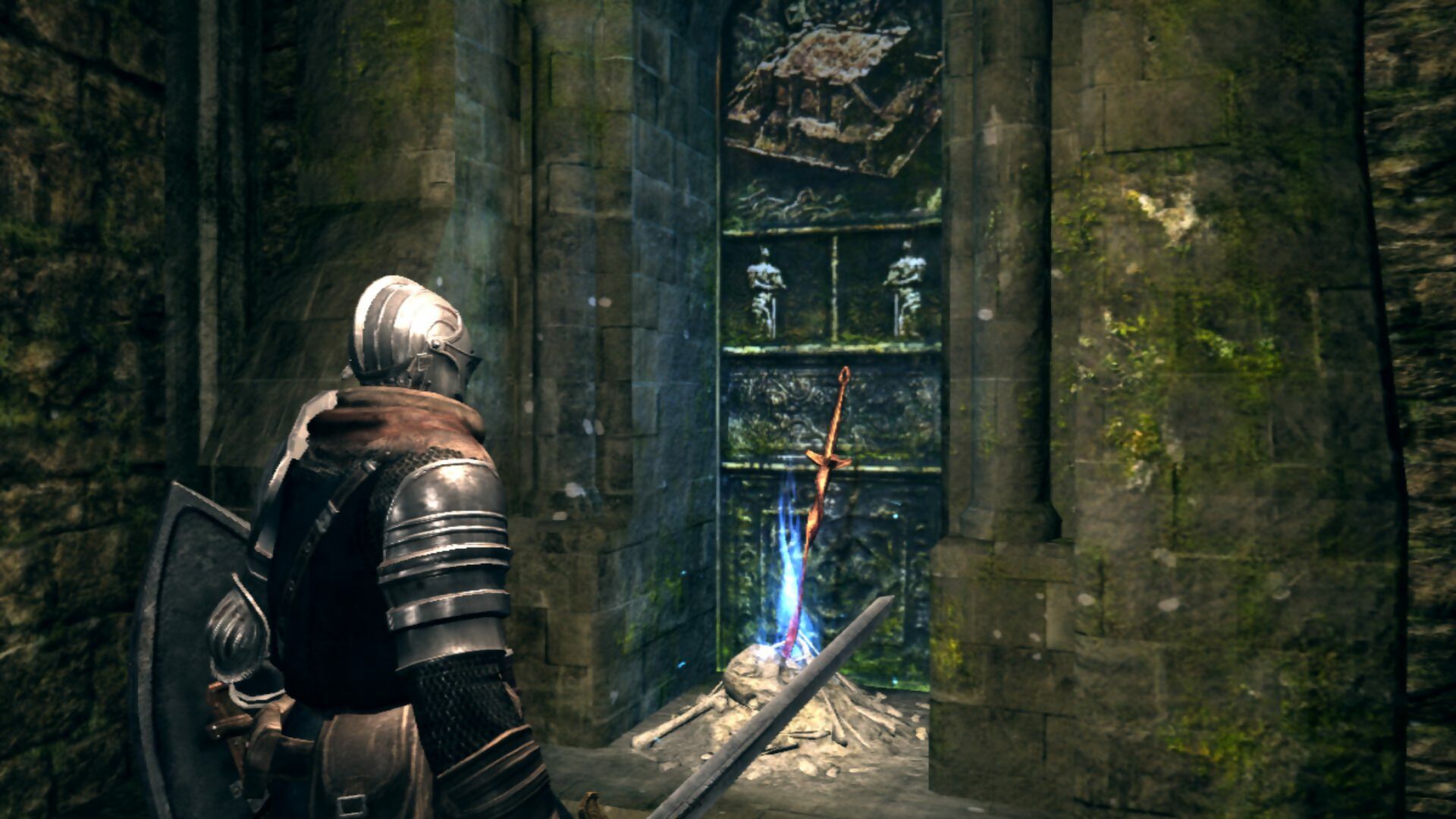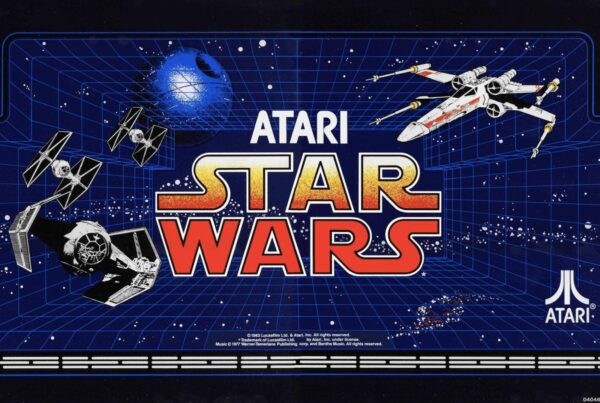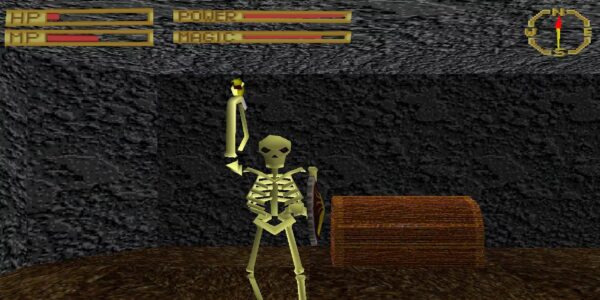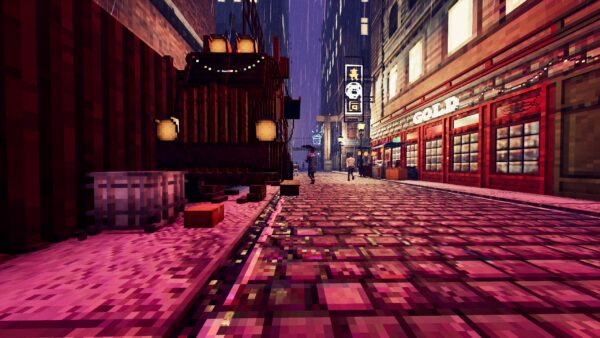
The country no longer dominates the industry in quite the way it once did, but Japan’s impact on video games is undeniable. Such companies as Taito and Namco transformed the arcade scene in the late 1970s and early eighties; while North America was going through its oft-written-about games crash around the year 1983, Nintendo transformed home console gaming with the Family Computer, or Famicom, or the plain old Nintendo Entertainment System elsewhere in the world.
Straight from our latest, Japan-inspired issue of Wireframe, then – you can buy a copy here, physical magazine fans – here’s our pick of the most influential games from the Land of the Rising Sun…
Space Invaders / 1978

Space Invaders
By now, there’ll be more than one generation of gamers who’ve never so much as played Taito’s Space Invaders, let alone wrestled with one of the gigantic cabinets that were ubiquitous the world over in the late 1970s. But as Space Invaders’ direct cultural influence fades into history, its importance remains: it was the first true gaming phenomenon, proving that a nascent medium could have crossover appeal (seriously, even literary warhorse Martin Amis once wrote a book on Space Invaders) and that there was a potential goldmine in pushing the technical boundaries to make new games. Within a year, rival firm Namco brought out Galaxian, which had more complex attack waves and full-colour graphics (besting Space Invaders’ monochrome display). And with that, a video game arms race had truly begun.
Pac-Man / 1980

Pac-Man
Amid a tidal wave of identikit space-themed shooters, Pac-Man gave the early games industry a vital shot of personality. The title hero may have been nothing more than a snapping, hungry mouth, but Pac-Man – and the army of wide-eyed ghosts who alternately pursued and fled from him – made Namco’s game the first to truly qualify as ‘cartoon-like’. Pac-Man was even loosely inspired by a popular manga/anime, Little Ghost Q-Taro, from which designer Toru Iwatani came up with his own ghost-themed premise, and Namco duly cleaned up on the spin-off and merchandising front. Pac-Man was gaming’s first true mascot, then, and soon, just about every other big game company would want one of their own. Basically, if you hold a lingering resentment towards Bubsy or Croc: Legend of the Gobbos, blame Pac-Man.
Super Mario Bros. / 1985

Super Mario Bros.
The game often credited with single-handedly saving the industry (if you’re in North America) was, of course, something special. It wasn’t the first platformer, but Super Mario Bros. raised the bar for the entire genre. Brighter, more detailed graphics. A genuine challenge and feeling of accomplishment. Buttery smooth scrolling. It was a delight, and helped steer video gaming onto its current course: appealing to all, providing endless hours of fun, and giving you tunes to hum in your head forever. Super Mario World perfected the 2D platformer, while Super Mario 64 took things – in every sense of the word – to a new dimension. But it was the humble NES game that set things in motion to begin with.
Dragon Quest / 1986

Dragon Quest
Many will argue that Final Fantasy should be here instead, but we’d counter that Dragon Quest first set the pace for console RPGs. The staples we now unblinkingly accept from the genre were all present and correct in this seminal first outing for the series: the top-down perspective, the sprawling narrative, the side quests, the intricate world-building. Sure, these elements had appeared in various computer RPGs before, but never had they been parcelled up for a console audience so cleanly. Dragon Quest would, of course, launch an entire series of sequels, spin-offs, and remakes, but it also defined an entire genre, providing a road map for future developers to follow.
OutRun / 1986

OutRun
OutRun was far from the first arcade racer, and it wasn’t even Sega’s first pseudo-3D super scaler title (that honour went to 1985’s Hang-On). But OutRun was undoubtedly the first racing game with what we can only describe as presence. Eschewing the anonymous motor-sport themes of earlier racing games like Super Sprint, Pole Position, or the aforementioned Hang-On, OutRun instead offered an automotive fantasy scenario: you’re at the helm of an outrageously expensive sports car, and there’s mile after mile of sun-drenched tarmac stretched out in front of you. OutRun’s infectious music, jolting deluxe arcade cabinet, and easy-going thrills made it one of the most played – and widely copied – racers of its day.
The Legend of Zelda / 1986

The Legend Of Zelda
Instantly, an entire generation realised it was dangerous to go alone: Nintendo’s grand adventure in The Legend of Zelda was the first taste many a young console player had of exploration, of discovery, of being expected to figure stuff out for themselves along the way. Stepping aside from arcade-style releases popular on the NES, Link’s first foray offered a depth hitherto unheard of – at least in those mainstream, non-computer-based circles. The feeling of grandeur only escalated through the Zelda series, with A Link to the Past wildly upgrading the formula for the SNES. Ocarina of Time, meanwhile, blasted things into the stratosphere with its grand 3D world and gorgeous (very of their time) visuals. Ol’ Link’s had a good run over the years.
Metroid / 1986

Metroid
The term ‘Metroidvania’ gets bandied around a lot these days, but it was Metroid that was doing the free-roaming platformer thing for a good few years before Konami got in on the act with the later Castlevania entries. Emerging just one year after Super Mario Bros., Metroid – along with The Legend of Zelda – saw Nintendo try to push the boundaries of the mid-1980s console game. Where Super Mario Bros. could be completed in a few minutes, Metroid was sprawling and required multiple sittings; where the former was linear, the latter was complex and open-ended. Metroid was a brave, important step for console games: it offered a darker, dare we say it, more grown-up scenario than Nintendo had come up with before this point, and the result was an enduring classic whose ideas still reverberate through game design today.
R-Type / 1987

R-Type
We had to include at least one horizontal shoot-’em-up on this list, but which one? Japan’s mastery of the genre arguably began with Konami’s Scramble (1981), which was followed up by its ingenious pseudo-sequel, Gradius, four years later. But in terms of worldwide influence, Irem’s R-Type towered over them both: other studios rushed to copy its ideas, with every shooter that followed needing some sort of novel mechanic (or if you’re cynical: gimmick) that doubled as both a shield and a weapon. Its visual ideas were similarly cribbed, borrowed, and stolen, both by other studios and by Irem itself. In short: after R-Type, arcade shooters were never quite the same again.
Double Dragon / 1987

Double Dragon
Irem got the belt-scrolling brawler going with Kung-Fu Master, and Technos Japan began experimenting with more complex fighting mechanics with Renegade (aka Nekketsu Koha Kunio-kun). But Double Dragon was the genre’s first blockbuster: its gritty, even sleazy gangland atmosphere was matched by an array of scrappy moves, from elbows to the throat and knees in the groin to baseball bats to the nose. Technos’ effort was soon bettered by its followers, Final Fight and Streets of Rage; still, those games wouldn’t have been the same without Double Dragon’s bare-knuckle blueprint.
Street Fighter II / 1991

Street Fighter II
It’d be unfair to say that all one-on-one fighters made pre-SFII were bad. But its impact on the industry was such that it changed the genre forever – there’s a good reason why nobody talks about the original Street Fighter in 2021. That earlier effort was like other pre-SFII combat games: basic, a bit janky, and lacking in long-term appeal. SFII, meanwhile, ushered in a new era of competitive combat, where each playable character was so different in terms of moves, strengths, and weaknesses, that it was possible to engage in long, nerdy conversations about which strategies were best or worst. An entire generation of gamers did; amusement arcades got a late jolt of renewed energy; meanwhile, SNK loitered in the shadows, quietly taking notes.
Sonic The Hedgehog / 1991

Sonic the Hedgehog
What we said about Pac-Man also goes for Sonic: he sold a legion of Mega Drives (and other consoles), and triggered a wave of wannabe mascots: Crash Bandicoot, Banjo Kazooie, Spyro the Dragon, Awesome Possum. Some tried to replicate Sonic’s speed (Zool); others tried to mimic its ‘attitude’ (Awesome Possum… Kicks Dr. Machino’s Butt). Some were good (Klonoa). Many were forgettable (Awesome Possum). Not that this was Sonic’s fault; with its debut, Sega got so much right. Little wonder other studios circled around the poor hog, trying to figure out how he managed to be so good.
Virtua Racing / 1992

Virtua Racing
To this day, Virtua Racing is still an absolute hoot. Those that followed in its path might still be good – Ridge Racer, Sega Rally, even the more serious Gran Turismo franchise – but it’s Yu Suzuki’s polygonal progenitor that gets the nod here. As with others on these pages, Virtua Racing wasn’t the first of its type, but it was the first to codify things: the polygons were bold and offered a level of (flat-shaded) detail that lifted the experience; it ran at a quick pace and maintained a stable frame rate, proving polygonal games could be relied on to run well; and it immersed players like never before. Virtua Racing wasn’t just an influence on 3D racers that followed – it was the point when the whole industry realised 3D graphics were here.
Tekken / 1994

Tekken
There are still serious arguments going on to this day as to whether it’s Tekken or Virtua Fighter that’s the better series. We’re not about to carry on the argument here, because Namco’s title being included isn’t about the quality argument – brilliant as King and co’s Iron Fist Tournament is. No, this is about the impact Tekken’s home release had on the market, with the System 11 arcade game arriving on the PlayStation in a significantly more arcade-perfect fashion than anyone at the time expected. It wasn’t flawless, though it made up for it with additional options and characters available to console players – but the real point was Tekken helped to smash open the floodgates in bringing perfect ports to the home; it showed home gaming was no longer in the shadow of its coin-munching brethren.
Pokémon Red & Blue / 1996

Pokemon Red & Blue
Often imitated, never bettered, it’s difficult to remember a time when Pokémon didn’t exist. The pre-Pikachu era feels so empty and dark, as though gaming would forever be trapped in the basement and presided over by no more than a committed few (million). But Game Freak’s kid-friendly RPG full of creatures and battles exploded onto the scene, caught the imagination of a generation of Japanese players, then did the same again when it arrived in the west a couple of years later. ‘Cultural phenomenon’ doesn’t fully describe Pokémon’s impact: it was truly world-changing.
Resident Evil / 1996

Resident Evil
And there we were thinking nothing would ever be more terrifying than Alone in the Dark, until those bloody dogs jumped through that bloody window. Resident Evil – even at the time – was derided for being clunky in animation, script delivery, and storyline. But it was also universally loved from day one for its mix of schlocky B-movie horror and exciting, anxiety-inducing action. Sure, some of the lines were laughable in the out-loud way, but the ambition pointed to something far greater than what the original game pulled off – atmospheric, brooding, and cinematic horror games that would scare people in a way only video games could. Obvious nod to Resident Evil 4 as well, which reinvented the entire series and single-handedly raised the bar for all games in one fell swoop.
Final Fantasy VII / 1997

Final Fantasy VII
The RPG was big in Japan – Dragon Quest had seen to that, as had the earlier Final Fantasy releases – but unless you were a keen importer here in Europe, or a hardcore player-of-the-games over in North America, you were unlikely to really know the Japanese branch of role-playing too well. Final Fantasy VII changed that, and with quite some style – it might have been the seventh mainline entry to the series, but it welcomed its millions of new players into the fold with an epic tale of eco-warriors, lies being lived, and talking cats across multiple CDs packed with wonderful FMV sequences. It immediately made prior JRPGs feel quaint by comparison, and helped to kickstart a new golden era for role-playing games of the east – and inspired plenty in the west to boot.
Castlevania: Symphony of the Night / 1997

Castlevania: Symphony of the Night
Obviously Metroid got the nod earlier on, and Super Metroid will be something in the mind of many a lover of the genre, but we couldn’t really sleep easy at night without giving the full-on Wireframe-shaped nod to Castlevania: Symphony of the Night. Aside from the fact that it’s an enduringly fantastic game, it’s also one that keeps on giving when it comes to influence. Look at the amount of indie titles out there riffing on the formula established by Symphony of the Night and, even if you’ve never played Konami’s game, you will understand just how important it was. Bottled lightning in many ways, it has yet to be bettered – but we’ve had plenty of fantastic titles emerging from its wake, from Chasm to Hollow Knight, even Bloodstained: Ritual of the Night.
Animal Crossing / 2001

Animal Crossing
It took years for Nintendo’s gentle life sim to snowball into the global behemoth it is today, but still, Animal Crossing has exerted a quiet influence for almost 20 years now. From its Japan-only N64 debut to its wider GameCube release, Animal Crossing proved that an unassuming game without fail states or action could have mass appeal. Digging up fossils, collecting shells, running errands, furnishing your house – there was and is an infectious charm to it all, and it’s something that’s left an indelible mark on the psyches of designers all over the planet. A Short Hike, Ooblets, My Time at Portia… these and other wholesome titles can be traced back to the disarming, witty Animal Crossing.
Metal Gear Solid / 1998

Metal Gear Solid
Had there ever been a game before Metal Gear Solid that combined so many idiosyncrasies of its auteur creator with such incredible action and bewilderingly high production values? So is it any wonder Hideo Kojima’s worldwide breakthrough came as a result of Solid Snake’s jaunt to Shadow Moses Island? Nah, not really. We’d seen hints in Kojima’s previous releases of what could be done, but Metal Gear Solid’s mix of creativity, imagination, and uniqueness made it so very much more than the basic stealth-’em-up it was under the surface. A blockbuster in the truest sense, and one of those games that just came out and changed everything.
Dark Souls / 2011

Dark Souls
Common parlance has it that there’s a genre called ‘Soulslike’ these days. Can we just end the entry there? No? Oh. FromSoftware had been trying to nail the formula with the earlier King’s Field series, almost struck gold with Demon’s Souls, but then very much wiped the floor with all competition via Dark Souls. The intensity of the challenge, the abstraction of the story, the iconography of the always-gorgeous (though often grim) world – it was masterstroke after masterstroke, and single-handedly created not just a wave of inspiration for others to ride, but its own genre norms for others to ape. A classic’s classic, of that there’s no doubt.
HONOURABLE MENTIONS

Shenmue
Donkey Kong / 1981
One of the earliest platformers, and the game that put Nintendo on the global map as a creative force to be reckoned with. Also launched the career of some odd little fellow with a hat and moustache. Whatever happened to him?
Xevious / 1982
This vertical shoot-’em-up wasn’t as big in the west, but its influence among Japanese developers was huge. Just about every shooter that followed, from Gradius to the bullet hell blasters of the present, owe something to Xevious.
Karate Champ / 1984
Simply put: the first hit one-on-one fighting game. Would you want to play it today? Probably not. Was it a pivotal moment in arcade history? Absolutely.
Operation Wolf / 1987
Arcade shooting galleries had fallen out of favour by the mid-eighties. But then this beast emerged with an Uzi strapped to the front, and suddenly gun games were all the rage again.
Star Fox/Starwing / 1993
It wasn’t Virtua Racing-levels of smoothness, not by a long shot, but Star Fox – Starwing on these shores – was early proof console gamers were heading towards a 3D future, and that there was an appetite for it.
Dance Dance Revolution / 1998
It might not have many imitators, but DDR influenced generations of players to a) dance around in public without a care in the world, and b) to use games as a form of exercise. That’s our logic; we’re sticking with it.
Silent Hill / 1999
The arthouse approach to Resident Evil’s B-movie bluster, Silent Hill leapt aboard the survival horror bandwagon, but crafted such a distinctive atmosphere that it was impossible to write off as ‘just another’ genre stablemate.
Shenmue / 1999
Blockbuster productions existed prior, but Shenmue’s budget of around £36m in 2021 money – back then a massive deal – shunted gaming development spending into overdrive. Shame it was a commercial failure, then.
Super Smash Bros. / 1999
It’s big, but it’s not clever – Super Smash Bros. set the ball rolling for what would become a tournament fighting juggernaut. While rarely outright copied, the Smash feel is something many a multiplayer game aims for these days.
Ico / 2001
By the early noughties, video games for the big consoles had to be big, full of explosions, and usually centred around war and killing. Ico bucked the trend in spectacular fashion, and while it wasn’t quite the influence it should have been, it did result in Shadow of the Colossus being made.





